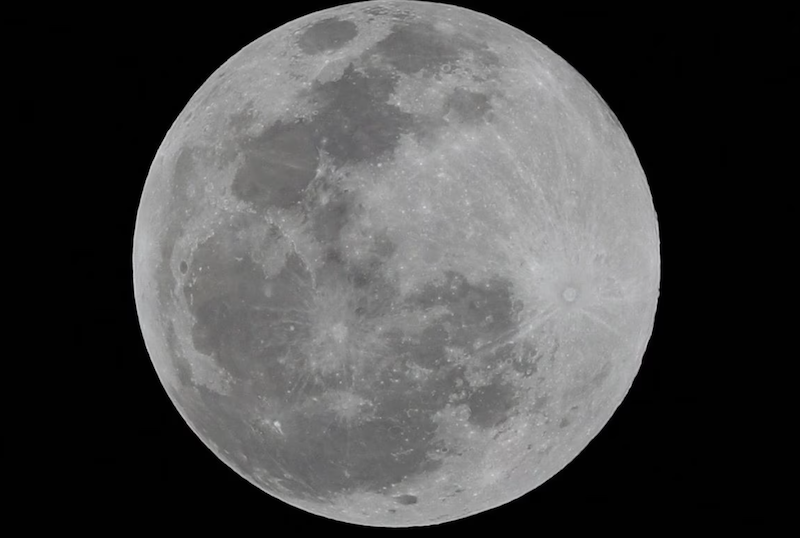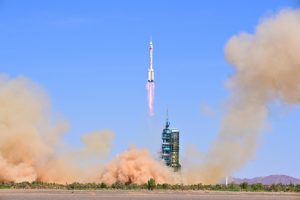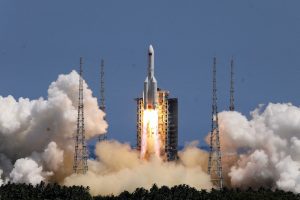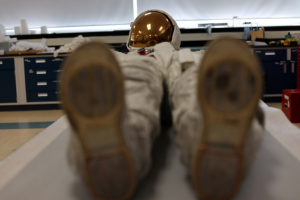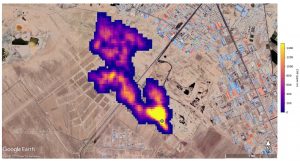China says it’s willing to collaborate on a key lunar mission, offering up the chance to international partners to “piggyback” on the Chang’e-8 rocket and even land their own modules on the Moon’s surface.
China, which aims to become a major space power by 2030, has opened up the mission to possible tie-ups as deadlines loom for setting up a permanent habitat on the south pole of the Earth’s satellite.
China will welcome countries and international organisations on its uncrewed Chang’e-8 mission and to jointly carry out “mission-level” projects, the China National Space Administration (CNSA) confirmed at the 74th International Astronautical Congress in Baku, Azerbaijan, on Monday.
Also on AF: US Senators Eye Xi Jinping Meet on China, S Korea, Japan Trip
Mission-level projects mean China and its international partners could launch and operate their spacecraft, conduct spacecraft-to-spacecraft “interactions”, and jointly explore the surface of the Moon, according to details announced on CNSA’s website.
International partners are also welcome to “piggyback” on the Chang’e-8 mission and independently deploy their own modules once the Chinese spacecraft lands, CNSA said.
Interested parties must submit a letter of intent to CNSA by December 31. Final selection of proposals will come in September 2024.
The Chang’e-8 mission will follow the Chang’e-7 in 2026, which also aims to search for lunar resources on the Moon’s south pole. The two missions will lay the foundations for the construction of the Beijing-led International Lunar Research Station (ILRS) in the 2030s.
China, which deployed an uncrewed probe to the Moon on the Chang’e-5 mission in 2020, plans to send an uncrewed Chang’e-6 probe to the far side of the Moon in the first half of 2024 to retrieve soil samples.
China aims to land astronauts on the moon by 2030.
NASA Ban on China Collaborations
China’s timeline to build an outpost on the south pole coincides with NASA’s more ambitious and advanced Artemis program, which aims to put US astronauts back on the lunar surface in December 2025.
On the 2025 Artemis 3 mission, two US astronauts will land on the lunar south pole, a region previously unvisited by any human. The last time a human set foot on the moon was in 1972 under the US Apollo programme.
The crewed Artemis 4 and 5 missions are planned for 2027 and 2029, respectively.
NASA is banned by US law from collaborating with China, directly or indirectly.
As of September, 29 countries – including India, which landed a probe near the Moon’s south pole in August – have signed the Artemis Accords, a pact crafted by NASA and the US State Department aimed at establishing norms of behaviour in space and on the lunar surface.
China and Russia are not signatories of the agreement.
China, for its own lunar station programme, has secured participation from only Russia and Venezuela so far.
- Reuters with additional editing by Sean O’Meara
Read more:
US Space Force General Floats China Crisis Hotline Plan
India Switches Off Pragyan Moon Rover, Sets Sights on Sun
India’s Skyroot to Double Rocket Launches Amid Moon Fever
Russian Spacecraft Luna-25 Crashes on The Moon




